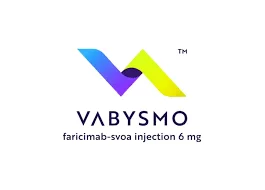
Vabysmo
Vabysmo (faricimab-svoa) is a prescription medicine given by injection into the eye used to treat adults with neovascular (wet) age-related macular degeneration (AMD), diabetic macular edema (DME), and macular edema following retinal vein occlusion (RVO).

Lucentis
Lucentis is the brand name of the anti-VEGF drug ranibizumab, which is injected into the eye to treat patients with certain eye conditions by slowing down vision loss.
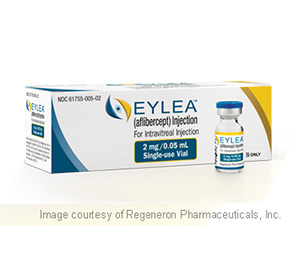
Eylea
Eylea (Aflibercept) is a new FDA approved drug developed for the treatment of wet age-related macular degeneration (wet AMD). Age-related macular degeneration (AMD) is an eye condition that causes damage to the macula, a small area in the retina responsible for the sharp central vision that allows you to see fine details clearly. It is a leading cause of blindness and is most common in individuals above 50 years of age.
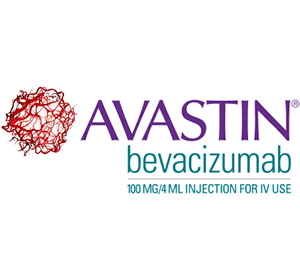
Avastin
Avastin is the brand name of the anti-VEGF drug bevacizumab, which is injected into the eye to treat patients with certain eye conditions by slowing down vision loss.
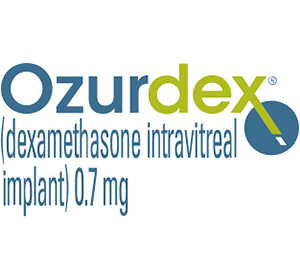
Ozurdex
Ozurdex is a tiny corticosteroid implant that is injected into the centre of the eyeball, which is known as the vitreous cavity, to help reduce swelling, improve vision, and alleviate eye pain in patients with certain inflammatory eye conditions.

Iluvien
ILUVIEN is a corticosteroid micro-implant that is injected into the centre of the eyeball, which is known as the vitreous cavity, to help reduce swelling, improve vision, and alleviate eye pain in patients with diabetic macular oedema who have been treated with corticosteroids in the past without having significant increased intraocular pressure.
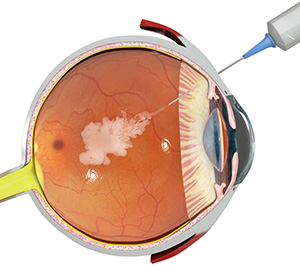
Intravitreal Injection
An intravitreal injection is a non-invasive eye procedure where medication is injected into the vitreous cavity - the space at the back of your eyes, near the retina. The vitreous cavity is filled with vitreous humour gel, a jelly-like fluid.
FAQ's - Regarding Eye Injections
How Much Do Eye Injections Cost in the UK?
Eye injections serve as a valuable treatment option for various ocular conditions, but their costs can vary depending on several factors. In the United Kingdom, the expense associated with eye injections encompasses multiple components, including consultation fees, procedure charges, and medication costs. Typically, the total cost of eye injections can range from several hundred to over a thousand pounds per session. However, specific pricing details may vary based on factors such as the types of eye injections administered, the frequency of treatment sessions, and the healthcare provider or clinic chosen.
Patients accessing eye injections through the National Health Service (NHS) may benefit from subsidised or fully covered treatment costs, particularly for conditions deemed urgent or sight threatening. Conversely, individuals seeking treatment through private healthcare providers may encounter higher out-of-pocket expenses, which can encompass consultation fees, procedure charges, and medication costs. It’s essential for patients to inquire about pricing details and potential financial assistance options when considering eye injection treatment.
How Long Do Eye Injections Last?
The duration of efficacy for eye injections varies depending on several factors, including the specific condition being treated, the type of injection administered, and individual patient responses. In general, eye injections are not permanent solutions, and patients may require periodic or ongoing treatment sessions to sustain therapeutic benefits.
For instance, in conditions such as age-related macular degeneration (AMD), which often necessitate anti-vascular endothelial growth factor (anti-VEGF) injections, treatment intervals typically range from several weeks to several months. Patients may undergo an initial series of loading doses followed by maintenance injections to preserve visual function and prevent disease progression.
Similarly, in cases of diabetic macular oedema (DME) or retinal vein occlusion (RVO), treatment regimens may involve regular injections over an extended period. The treating ophthalmologist will determine the optimal injection schedule based on disease severity, response to treatment, and individual patient needs. It’s essential for patients to adhere to the recommended treatment schedule and attend follow-up appointments to maximise therapeutic outcomes and monitor disease progression.
Which Injection Is Best for the Eye?
The selection of the most appropriate injection for a particular eye condition depends on several factors, including the underlying pathology, disease severity, patient characteristics, and treatment goals. Among the most commonly utilised injections for eyes in ophthalmic practice are anti-vascular endothelial growth factor (anti-VEGF) agents, corticosteroids, and antibiotics.
Anti-VEGF injections, such as ranibizumab (Lucentis) and aflibercept (Eylea), are frequently employed in the management of conditions such as AMD, diabetic retinopathy, and retinal vein occlusion. These injections help inhibit abnormal blood vessel growth, reduce retinal swelling, and stabilise vision, thus preventing further vision loss.
Corticosteroid injections, such as triamcinolone acetonide and dexamethasone, exert potent anti-inflammatory effects and are utilised in the treatment of inflammatory eye diseases, macular oedema, and uveitis. These injections can provide rapid relief of symptoms and may be particularly beneficial in cases of refractory or chronic inflammation.
Additionally, antibiotics such as vancomycin and ceftazidime may be administered via intravitreal injection to combat bacterial infections within the eye, including endophthalmitis. Prompt initiation of antibiotic therapy is crucial in preventing vision-threatening complications and preserving ocular integrity.
The selection of the most appropriate injection should be made in consultation with a qualified ophthalmologist or retina specialist, who can assess the individual patient’s clinical status, disease characteristics, and treatment preferences. It’s essential for patients to discuss their treatment options, including potential risks and benefits, with their healthcare provider to make informed decisions regarding their eye care.
What Are the Benefits of Eye Injections?
Eye injections offer several advantages over conventional oral medications or topical treatments for ocular conditions. By delivering medication directly to the target site within the eye, injections ensure maximal drug concentration at the site of action, enhancing therapeutic efficacy while minimising systemic side effects.
Moreover, the localised delivery of medication bypasses systemic metabolism and first-pass metabolism, optimising bioavailability and pharmacokinetics. This targeted approach allows for lower overall drug doses, reducing the risk of systemic toxicity and adverse effects.
Furthermore, eye injections enable rapid onset of action, facilitating prompt symptom relief and disease stabilisation. In conditions characterised by acute exacerbations or rapid disease progression, such as wet AMD or severe uveitis, intravitreal injections provide swift and effective intervention, preserving visual function and mitigating complications.
Overall, the benefits of eye injections include:
- Enhanced therapeutic efficacy.
- Minimised systemic side effects.
- Rapid onset of action.
- Disease stabilisation.
- Preservation of visual function.
- Minimised treatment burden.
Can Eye Injections Have Side Effects?
While eye injections are generally safe and well-tolerated, they can occasionally be associated with certain side effects and risks. Common side effects may include transient ocular discomfort, mild pain or irritation at the injection site, and temporary changes in intraocular pressure (IOP).
Less frequently, patients may experience more serious complications, such as infection, inflammation, retinal detachment, or haemorrhage. These complications are rare but require prompt medical attention to prevent vision loss or permanent damage to ocular structures.
Additionally, some individuals may develop allergic reactions or hypersensitivity to injected medications, manifesting as redness, swelling, itching, or systemic symptoms such as rash or difficulty breathing. Patients should promptly report any unusual or concerning symptoms to their healthcare provider for evaluation and management.
In summary, eye injections represent a valuable therapeutic option for various ocular conditions, offering patients effective management, rapid symptom relief, and preservation of visual function. While the cost of treatment and potential side effects should be considered, the benefits of eye injections in optimising patient outcomes and enhancing quality of life are undeniable.







